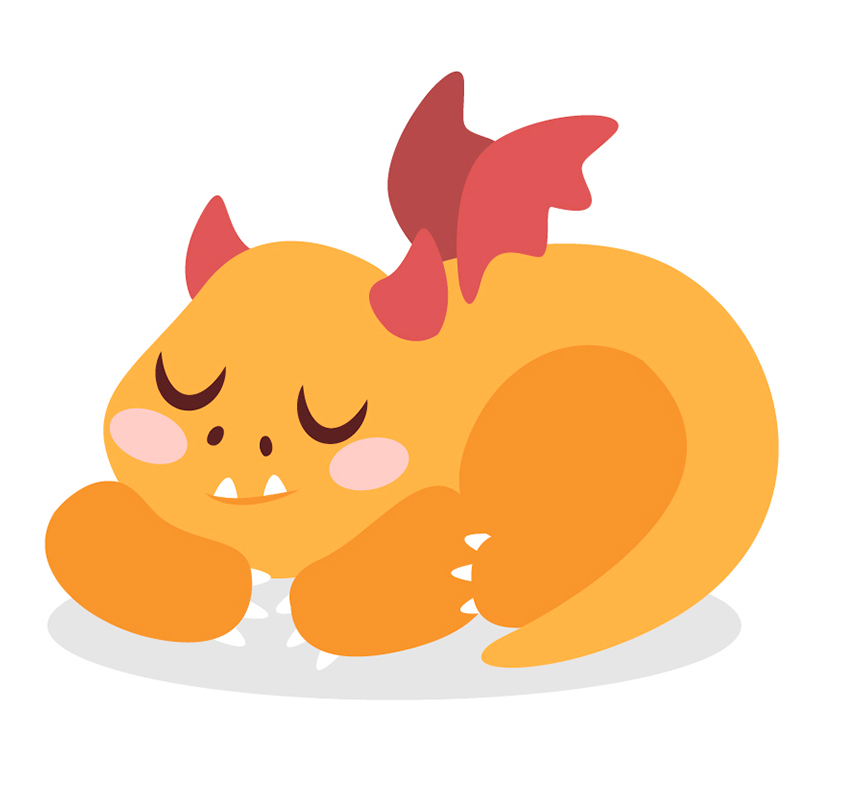Understanding Mendelian genetics.
The purpose of this section is to show you how traits and genotypes are inherited in the offspring, and what is the likelihood of any particular baby dragon having a specific genotype and phenotype.
If we know the genotypes of the parents, can we determine how likely it is that a baby dragon will have a particular phenotype?
In the example below, we take two parent dragons who are both heterozygous for fire breathing (“Ff“). Each parent has both an F allele (fire-breathing) and an f allele (no-fire). However, because the F allele is dominant, the phenotype of both parents is fire-breathing  .
.
We can use a Punnett square to show the possible combinations of alleles in the offspring:
A baby dragon will get one allele from Parent 1 and one allele from Parent 2 (which allele from each parent is a random process). The possible genotypes of the baby dragons are shown inside the Punnett square above. We can see that there is a single possibility to get a genotype FF or ff, but there are two possibilities to get genotype Ff.
The genotypes FF, Ff, ff are said to have a 1:2:1 ratio.
If we produced 100 baby dragons from these parents, we would expect:
- 25 to be FF,
- 50 to be Ff, and
- 25 to be ff.
As the F allele is dominant, 75 (25 FF plus 50 Ff) of the baby dragons will be fire-breathing  and 25 will not breathe fire.
and 25 will not breathe fire.
Now, say that we would like to ensure that all our baby dragons can breathe fire.
Our Parent 1 has the genotype FF (homozygous for the F allele and fire-breathing) and Parent 2 has the genotype ff (homozygous for the f allele and does not breathe fire). Let’s generate another Punnett square and look at the genotypes of the baby dragons:
In this case, we can see that all baby dragons have the genotype Ff, and because the F allele is dominant, all are able to breathe fire  . If we want to breed an army of fire-breathing dragons using these two parents would be a good strategy.
. If we want to breed an army of fire-breathing dragons using these two parents would be a good strategy.
Experiment to try:
- In the simulation app, under Choose Trait select only the fire-breathing trait and under Parent 1 and Parent 2 select Heterozygote meaning both parents will have the genotype (Ff).
- From the first Punnett square above you know that in the baby dragons the genotypes FF, Ff, and ff should be in a 1:2:1 (FF:Ff:ff) ratio. Under Number of baby dragons select 10 and observe the bar-plot showing the ratio of genotypes in the baby dragons. Does it follow a 1:2:1 ratio?
- Re-run the simulation and notice that the results change. This is because the allele passed on from the parent is random, it can be either the F allele or the f allele.
- Now under Number of baby dragons select 100 and see if the results better follow a 1:2:1 ratio, as you sample more and more baby dragons the ratio of genotypes will more closely resemble a 1:2:1 ratio.
- Change the genotype of Parent 1 to Homozygous (Dominant) and Parent 2 to Homozygous (Recessive), and study the results as you change the number of baby dragons. Why is there only one genotype in the baby dragons? (Hint: look at the second Punnett square we did above)
- Try new combinations of parental genotypes and study the results, and create a Punnett square to check the results.

